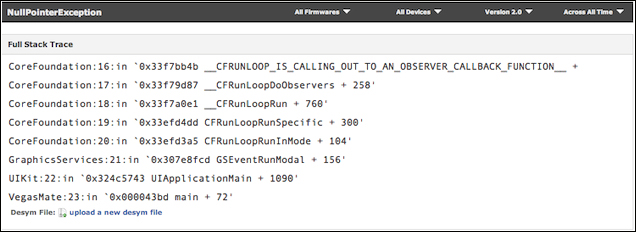Flurry provides you with a full view of the stack trace. To generate the stack trace, navigate to Stack Traces and then to the Overview section. Then click on the crash to generate the trace for it. Flurry also provides you with the access to download the full crash report from the same page. If the stack traces are desymbolicated, then Flurry provides you with the option to upload your .dSYM file in iOS to symbolicate the crash report.
The .dSYM upload allows developers to upload their application symbolication file automatically to symbolicate the Flurry-generated crash logs, as shown in the following screenshot:

To access the .dSYM file of your application, follow these steps:
Navigate to your Archives tab.
Select your application for which you need the
.dSYMfile.Right-click on the application, and then from the menu, click on Show in Finder.
This will open the finder window that your application archive is placed on.
Right-click on...

